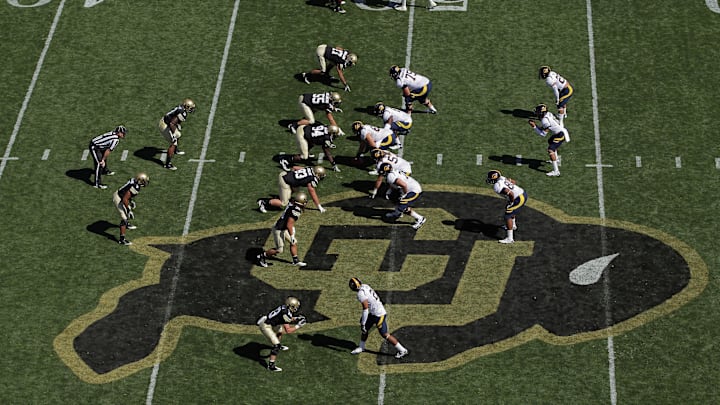I’ll just say it—this one hurts my heart.
The grass at Folsom Field has always been one of my favorite things about Colorado football. It’s part of the soul of that place. You feel it walking in on game day: Ralphie tearing across a natural surface, the crunch of cleats on frozen blades late in the season, the way the Flatirons backdrop just fit with the grass.
There’s something raw and organic about grass in college football—especially at a place like CU. So yeah, hearing that Folsom is already almost finished with a full turf, kind of a gut punch.
But if you’re a Buffs fan with your eyes on the bigger picture, you should be fired up.
Out with the green
Crews are already halfway done installing AstroTurf’s RootZone 3D3 system, with the south end zone now boasting the fresh “Buffaloes” lettering against a black background. The full field is expected to be ready by July 1—just in time to host three Phish concerts before football returns in August.
CU athletic director Rick George said it plainly: this is about preparing for a potential home College Football Playoff game in December. You can’t grow grass in Boulder that time of year, and the CFP’s new format opens the door for higher-seeded teams to host first-round matchups.
Turf gives Colorado flexibility. It holds up in bad weather. And it allows for multi-use events like concerts, clinics, and practices that would’ve torn up the grass in previous seasons.
It’s about postseason readiness. About building a program that doesn’t just talk about playoffs but actually plans for them.
Coach Prime is driving the vision
Coach Deion Sanders—true to form—didn’t shy away from setting the tone when asked about the change earlier this spring.
“We plan on making it to the Playoffs,” Sanders said. “We don’t want to play in the frozen tundra... Going to the turf just assures us a better footing, a better surface, and it takes a lot of pressure off our wonderful staff.”
Sure, we’re losing something pure with the grass—but in exchange, we’re gaining something powerful: proof that Prime and this athletic department believe Colorado is ready to host playoff football in Boulder.
Now that's exciting.
Still, concerns are real
We can’t ignore the other side of this debate. Reggie Bush and a chorus of NFL players have spoken out against turf in recent months, pointing to injury concerns—especially ACL tears—on synthetic surfaces. Bush flat-out called turf “one of the most dangerous surfaces” in football.
It’s a real conversation, and it should be had. Turf isn’t perfect. Players hate it. But in a place like Boulder, where weather becomes a major factor late in the season, this might be the best option.
This is about building an infrastructure that can support what this program is becoming.
What this means for Buffs fans
Seven home games. A revamped roster. And now, a field built to handle big-time football when it matters most.
Folsom Field will look different this fall—and yeah, part of me will miss the grass. But you know what I won’t miss?
Watching other schools play playoff games in cold-weather stadiums while we sit on the couch, wondering what could’ve been.
Colorado’s betting big. On turf. On Prime. On the future.
It’s bittersweet, but it’s bold. And I’m pretty darn excited about it.
—
Want more stories like this? Follow us on X for all things Colorado Football and Basketball.
